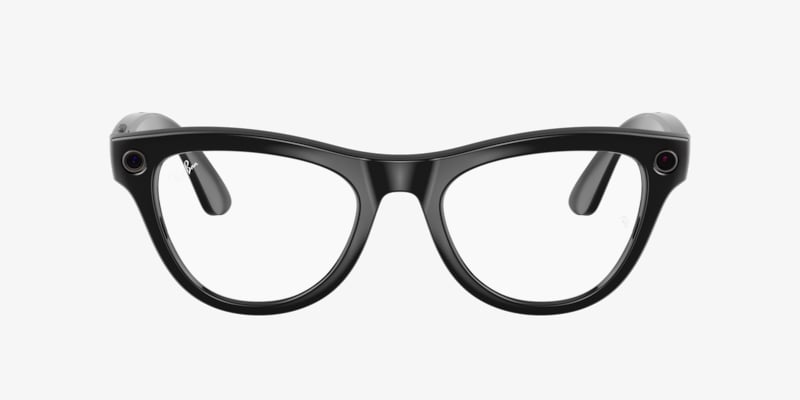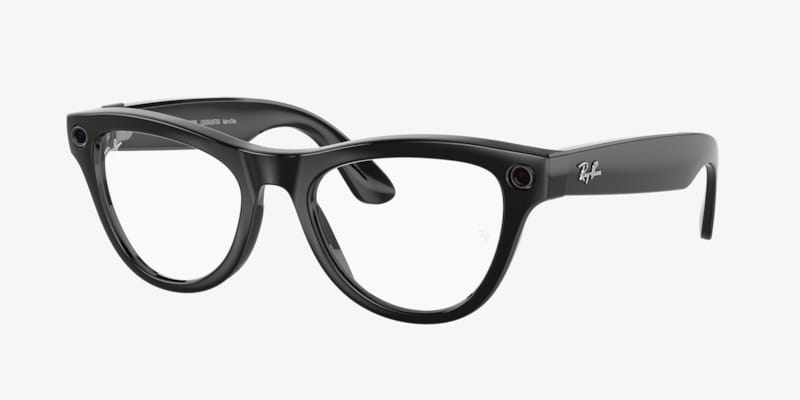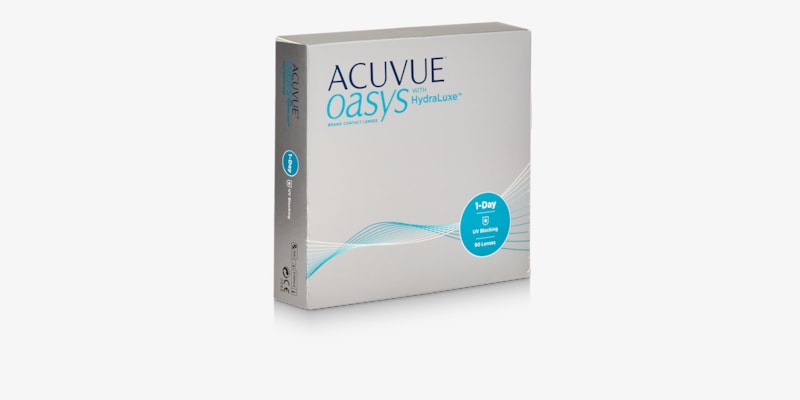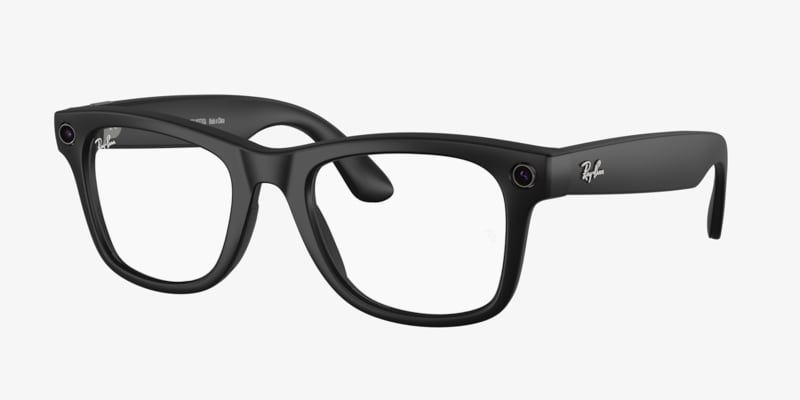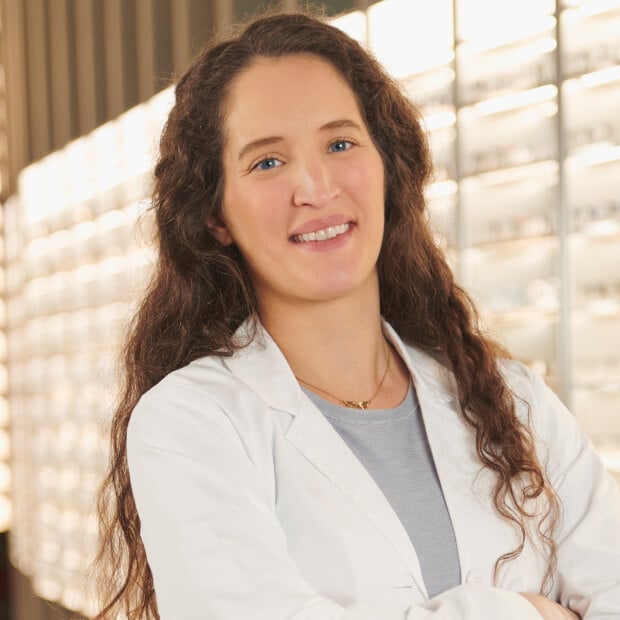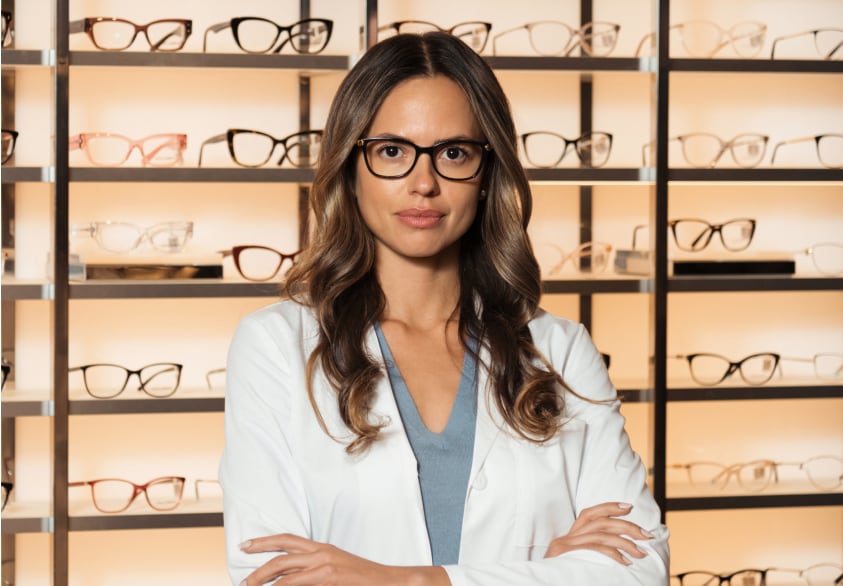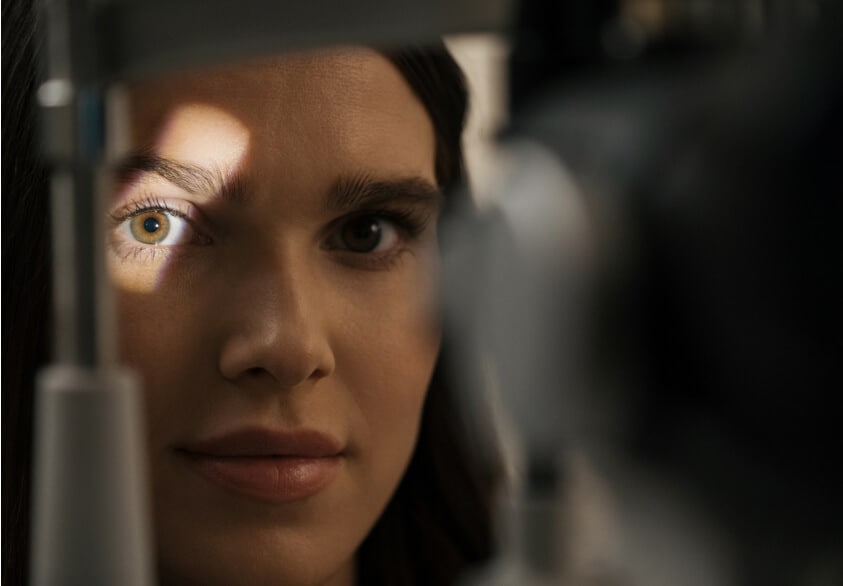COMMON EYE CONDITIONS
The eye has many moving parts that work together to maintain healthy vision. While these parts usually function without too many problems, it’s possible for a condition to develop and create issues.
Below are some of the most common conditions eye doctors diagnose during a comprehensive eye exam. When eye exams are performed regularly, eye doctors can catch these vision issues early and provide prompt correction and treatment.


MYOPIA
Also known as nearsightedness, myopia is a common vision condition that affects about 40% of the U.S. population. When someone is nearsighted, they see close objects clearly, but struggle to clearly see things in the distance.
Myopia often develops during childhood and usually occurs when the eyeball is longer than it should be. This may be because the cornea is too curved for the length of the eyeball, or because the lens is too curved. Either way, the shape or structures of the eye don’t bend light correctly.
This causes incoming light rays to focus images at a point in front of the retina instead of directly on it. As a result, your distance vision is blurry.
Heredity can play a role in passing myopia down from parent to child. Environmental risk factors include spending a lot of time doing near work — like reading, coloring or looking at a handheld screen — without visual breaks1.
IF YOU'RE
EXPERIENCING...
- Difficulty seeing the white board at school or the TV at home
- Squinting or partially closing the eyes to see distant objects
- Eye strain or headaches when focusing on faraway objects
Myopia correction consists of corrective glasses or contact lenses, or refractive surgery like LASIK. For children, an eye doctor may suggest myopia control strategies to help slow the progression of myopia and keep it from worsening into high myopia. Example of high myopia strategies include special contact lenses or glasses, myopia control eye drops, and making certain lifestyle changes2. High myopia is severe nearsightedness that carries an increased risk of sight-threatening problems later in life.
HYPEROPIA
Hyperopia, also called farsightedness, is a common vision condition that affects 5% to 10% of Americans3. When a person is farsighted, their distance vision is clear, but it can be a struggle to focus on close-up objects.
Hyperopia occurs when the eyeball is shorter than it should be, or the cornea isn’t curved enough. This means the eye doesn’t bend light correctly, which causes incoming light rays to focus images behind the retina instead of directly on it.
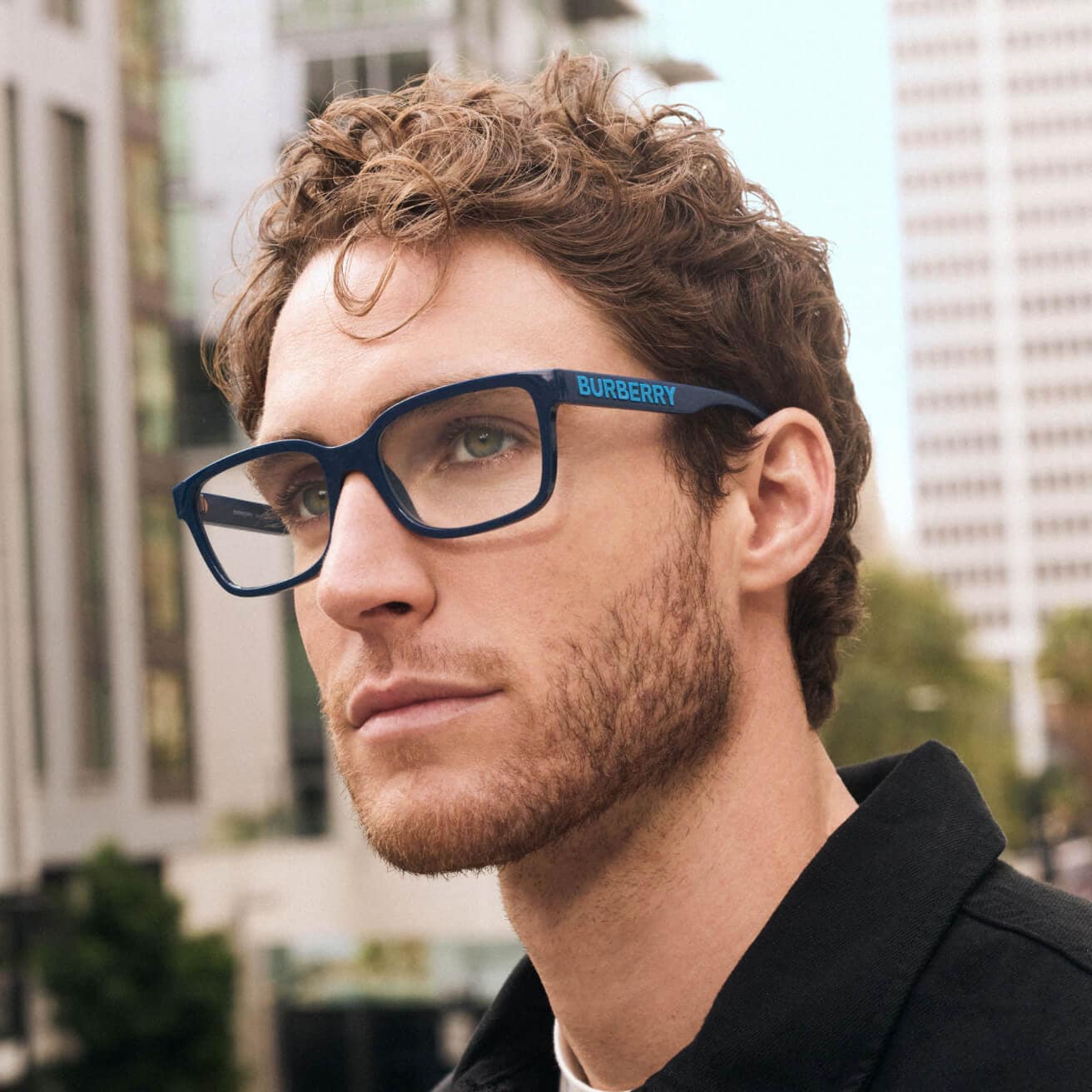
IF YOU'RE
EXPERIENCING...
- Difficulty focusing on close-up objects
- Headaches while reading, writing or after doing near work
- Eye strain, squinting or partially closing the eyelids to see more clearly
Hyperopia can be corrected with prescription glasses or contacts, or corrective laser surgery (LASIK). These treatments adjust the image to focus directly on the retina rather than behind it.
Farsightedness usually gets worse as you get older. While the symptoms may be similar to those of age-related presbyopia, hyperopia is not caused by aging.

ASTIGMATISM
Astigmatism is a refractive error that affects approximately 1 in 3 Americans. It is caused by irregularities in the cornea — the outer surface of the eye.
Normally, the eye’s cornea and lens are equally curved, which allows incoming light to focus precisely on the retina like a spotlight. When the cornea is irregularly curved, it causes incoming light to scatter instead of focus. This can make vision blurry at any distance and can often get worse in low-light conditions such as driving at night.
Explore the Toric Contact Lenses which are specifically dedicated to this condition here.
IF YOU'RE
EXPERIENCING...
- Blurry vision when looking at near or far objects
- Eye strain
- Headaches
- Needing to squint to see clearly
Astigmatism can occur alone or with myopia or hyperopia. It can be treated with astigmatism-correcting glasses or contact lenses. Keep in mind that not all contacts or glasses for astigmatism are the same. Prescriptions vary depending on the location and severity of the irregularities in the cornea.
AGE-RELATED EYE
CONDITIONS
As people age, there is an increased risk for some eye conditions to develop. While some conditions are common and can be corrected easily, more serious conditions can cause vision damage or loss. People aged 40 and older may develop eye problems such as presbyopia, macular degeneration, cataracts and glaucoma.

PRESBYOPIA
Presbyopia is an age-related refractive error that affects a person’s ability to see clearly up close. It typically begins around age 40 and can progress until age 60 to 65, when it stabilizes4.
The condition is caused by age-related changes in the eye’s lens. Mature age causes the lens to thicken and lose flexibility. The muscles around the lens also weaken, which makes it harder to focus on up-close objects.
People with presbyopia may find that they need to hold their phones or restaurant menus farther away than in the past to read clearly. They may also experience eye strain or headaches when performing near work.
Depending on your prescription, you may be able to treat presbyopia with a pair of reading glasses that help compensate for the loss of near vision. Progressive lenses are another option that can help people who have another refractive error in addition to presbyopia. Contact lenses, refractive surgery and lens implants are other less common treatment options5.
AGE-RELATED
MACULAR
DEGENERATION
Age-related macular degeneration (AMD) is a progressive eye disease that affects your central vision. AMD happens because the macula — the most light-sensitive area of the retina — becomes damaged and starts to deteriorate. The macula helps you see fine details right in front of you. As the condition progresses, central vision worsens until it is lost.
There are two types: dry AMD and wet AMD. Dry AMD is more common and occurs when cells in the macula start to deteriorate. Wet AMD happens when abnormal blood vessels grow under the retina and leak fluid.
Risk factors for AMD are age (being 60 years or older), smoking and having a family history of AMD. It’s also been determined that Caucasian people have a higher risk of developing AMD than any other racial group6.
While treatment options are limited for dry AMD (the most common type), you can reduce your risk by exercising regularly, eating a vitamin-rich diet and wearing sunglasses outside.
CATARACTS
A cataract is characterized by cloudiness in the eye’s lens. They are common in older adults and may affect one or both eyes.
The lens of the eye is made of water and protein. After age 40, the proteins start to break down and may clump together, creating a cloudy area in your vision.
As more proteins gather in this clump, the bigger it gets. Eventually the clump of proteins clouds the entire lens. This can cause vision to become dull, blurred and hazy.
Diabetes, smoking, excessive alcohol consumption, UV exposure and eye trauma can raise a person’s risk of developing cataracts. Other risk factors include prolonged steroid use and a family history of cataracts.
Minor cataracts may be managed with glasses or contact lenses. But larger cataracts often need to be removed with cataract surgery. This surgery consists of an eye surgeon removing the old cloudy lens and replacing it with a new artificial lens7.

DRY EYE
Dry eye syndrome s a common condition that happens when a person’s tear film is not stable and does not moisturize or nourish the eyes well enough. It can occur if not enough tears are made, or if the tears being made lack the oil that prevents them from evaporating too quickly.
Several biological factors can cause dry eyes. These include mature age, menopause and certain eye or medical conditions, as well as taking medications like antihistamines, antidepressants and some blood pressure medicines. Environmental factors such as a dry, dusty climate or excessively dry heating or air conditioning can also contribute to dry eyes.
IF YOU'RE
EXPERIENCING...
- Scratchy, gritty feeling in the eyes
- Burning or a feeling of dryness
- The sensation that something is in your eyes
- Excessive eye watering
- Blurry vision
An eye exam with dry eye testing can determine what’s causing your dry eye symptoms and the best way to treat it. Artificial tears (or lubricating eye drops) may be prescribed to reduce the itchy, burning feeling. Your doctor may also suggest prescription eye drops that help your body produce more tears naturally. Or they may recommend punctal plugs, which block the tears from draining so quickly.
TIPS TO HELP
PREVENT
DRY EYE
- Blink regularly. If you’re on a computer, practice the 20-20-20 rule (every 20 minutes, look at an object 20 feet away for 20 seconds).
- Boost your humidity level in air conditioning or heating.
- For people with dry eye, glasses are often a more comfortable option than contact lenses for vision correction. This is because the tear film is unstable (contact lenses sit on the tears) and because oxygen can get to the eyes more easily when wearing glasses.
- Wear full-coverage wraparound sunglasses if you’re outdoors.
- Ask your doctor about dietary supplements to increase your essential fatty acid intake.
- Drink plenty of water — at least 8 to 10 glasses every day.
For more information about dry eye syndrome, visit AllAboutVision.com.

EYE ALLERGIES
The tell-tale signs of eye allergies occur when allergens — such as grass, pollen and mold — irritate your eyes. To fight off allergens, your eyes produce a chemical called histamine. It's histamine that causes the eyelids and thin membrane inside them (the conjunctiva) to become red, swollen and itchy.
HOW TO WEAR CONTACT LENSES WITH ALLERGIES
If you wear contacts, eye allergies can be especially bothersome. Allergens can build up on your contact lenses, causing discomfort. To combat this, try daily disposable lenses. Changing your contacts every day won’t give allergens time to build up.
Another tip is to give your eyes a break from contacts when your allergies are flaring up. Switching between contacts and glasses allows your eyes to breathe and may help relieve eye allergy symptoms.
Remember to never share contact lenses with another person. Doing this is an instant germ spreader that can quickly lead to an eye infection.
GLAUCOMA
Glaucoma is a group of related eye issues that, if left untreated, can damage the optic nerve and eventually result in blindness. The optic nerve is responsible for sending messages from the eyes to the brain. When pressure within the eye gets too high and stays that way, it can press against and damage the optic nerve. Low-tension glaucoma, though less common, can also damage the optic nerve and vision.
People affected by glaucoma may not experience symptoms until the damage to the optic nerve has already been done. But an eye doctor can check eye pressure and the appearance of the optic nerve during an eye exam. If they notice any abnormalities, they can suggest methods of prevention or management.
While there’s no cure for glaucoma, early detection can help preserve remaining vision.
DIABETIC EYE
DISEASE
Diabetes affects a huge portion of the population, making it one of the biggest culprits of vision loss. People with diabetes are 25 times more likely to lose their vision than the rest of the population8.
This happens when high blood sugar levels associated with diabetes damage the capillaries that help to nourish the retina. Continued damage to retinal tissue can lead to diabetic retinopathy and result in vision loss or blindness.
During an eye exam, if your doctor sees signs of diabetic eye disease, they can refer you to a specialist or begin treatment to help preserve your eyesight. Treatment for diabetic retinopathy can repair eye damage and potentially prevent vision loss in most people9.

WAYS TO MAINTAIN
EYE
HEALTH
Some eye disease risk factors (like age and genetics) are beyond our control. But there are some things you can do to reduce your risk of developing certain eye diseases. You can:
- Have regular eye exams. Insist on routine exams for anyone you care about, yourself included. Book an eye exam appointment for yourself and your family today.
- Address your high blood pressure. Hypertension (high blood pressure) has been associated with eye damage, as well as many other health problems.
- Maintain a healthy weight. Obesity increases your risk of developing diabetes and AMD. Ask your doctor for help.
- Quit smoking. Smoking increases your chance of developing diabetes, AMD, cataracts and many other health issues.
Vision plays a huge role in the quality of our lives, and it’s too precious to be left to chance. Let your eye doctor become a trusted partner in keeping your eyes healthy. By getting annual comprehensive eye exams, they can address any problems early and help you make the most of your vision.
SOURCES
- Myopia: A close look at efforts to turn back a growing problem. National Eye Institute. October 2017.
- What is myopia control? All About Vision. May 2022.
- Farsightedness. Cleveland Clinic. November 2020.
- Presbyopia: Symptoms and causes. Mayo Clinic. November 2021.
- Presbyopia: Diagnosis and treatment. Mayo Clinic. November 2021.
- Risk factors for age-related macular degeneration (AMD). VisionAware. March 2022.
- Cataracts. National Eye Institute. January 2023.
- Diabetic retinopathy. Kellogg Eye Center. Accessed February 2023.
- Diabetes and vision loss. Centers for Disease Control and Prevention. December 2022.
Book an eye exam in 3 easy steps
Choose your location
Schedule an eye exam
Add to calendar





